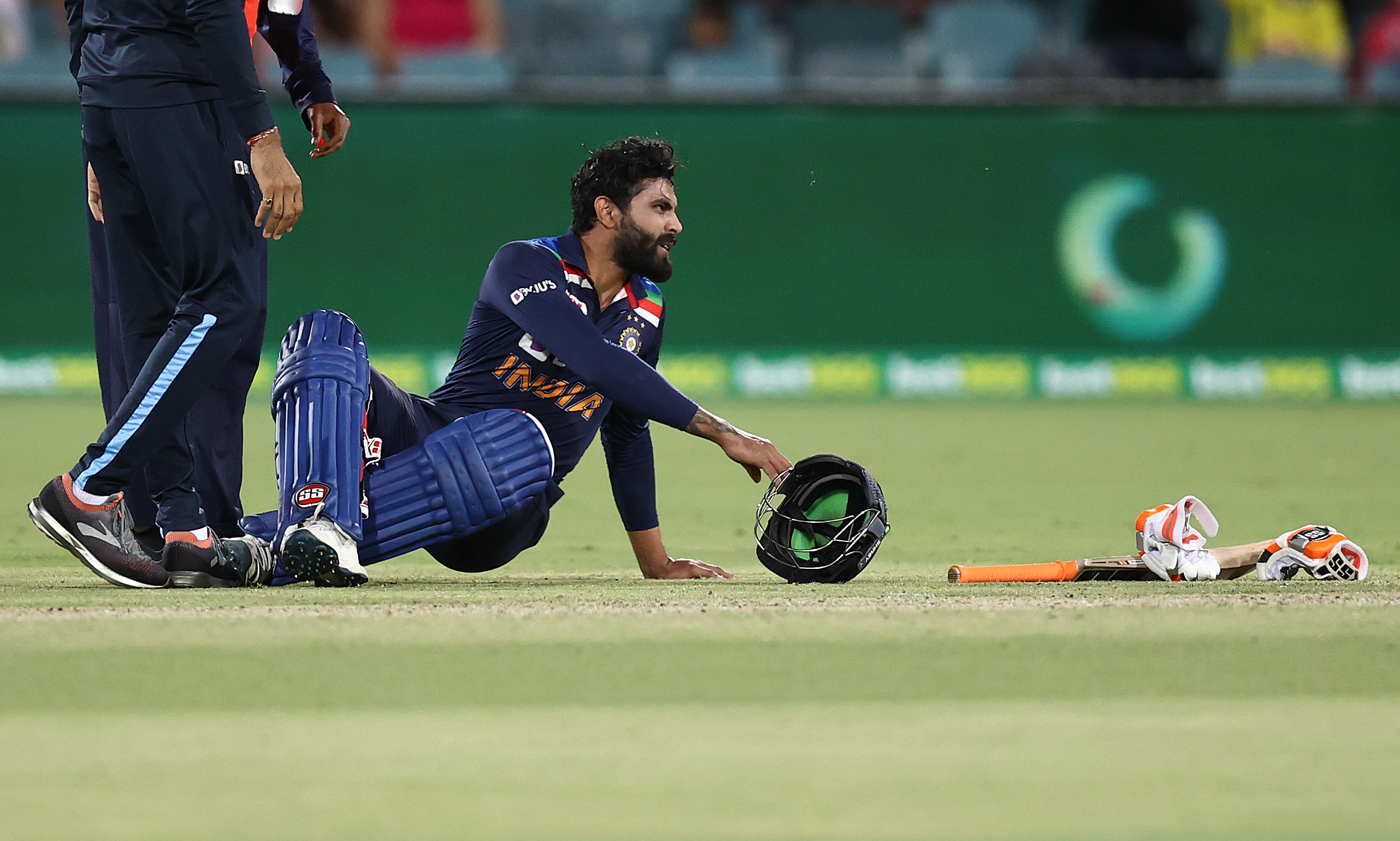Concussion Substitute : A case of sense and sensibility

Jadeja was hit on the head
|The Brainline journal suggests that the dangerous collection of blood after a bump, blow, or jolt to the head or body might squeeze the brain against the skull. Concussion pushes the sportsman out of their comfort zone that might create a fatal situation later on.
However, was it the progressiveness of the injury or a sensible immediacy is a question that lingers. It was brought forward in the first India-Australia T20I in Canberra with the Ravindra Jadeja - Yuzvendra Chahal substitution creating a mind-boggling denomination among fans and experts alike. But the bottom line couldn’t have been farther from the truth.
Before getting there, let’s understand the situation in the first place. Jadeja batted for India, didn’t take a concussion test immediately after he was struck on the left side of his forehead by a Mitchell Starc delivery which ricocheted off the bat. He waited for four more deliveries when he smashed nine runs and according to the turn of the events shared by the Indian team, he was feeling a bit “dizzy” while returning back to the dressing room. Just add a bit there - Jadeja had pulled up his hamstring during his inning which would’ve created some problem in bowling as well.
In hindsight, looking at the impact both Chahal and Jadeja had with the ball and bat respectively, Australia had all the reasons to feel hard done by. But that also begs the question about a larger picture - something that needs a clear definition.
Now let’s go back to where we started.
Concussion is a serious problem in sport and a life-threatening one as well, unlike a niggle or an injury. If a medical expert, in this case Dr Abhijeet Salvi of the Indian cricket team, feels that the injury is severe enough to keep him away from the remainder of the game, you got to respect that opinion and not rely on pure speculation.
We all remember how Steve Smith kept on batting after being concussed yet had to be replaced the next day with Marnus Labuschagne when he realised the injury was hard enough. If the rush of adrenaline didn’t allow Jadeja to take the test just after the second delivery of the last over, we are surely talking about a problem here but in no way a crime.
It was good that Jadeja admitted the same instantly and took the test which subsequently ruled him out of the series. That should shut some high-paid Aussie critics, blabbering the honesty of the Indian team management. But the most valid concern was actually shared by Australian all-rounder Moises Henriques who was not convinced if Chahal was indeed a like-to-like replacement for Jadeja.
"One is an all-rounder and a gun fielder and the other one is an out and out bowler who bats 11. It's nothing to do with his hammy. I guess I'd like to look into that as a like-for-like decision so to speak because we've already seen one half of how Jadeja can be, how well he can bat. There's no doubt he got hit on the head, he got hit on the helmet and then professionals made a decision from there. I do try and see the best in everyone," he said.
Henriques was right in many fronts but then again, Jadeja was a bowling all-rounder in a team that had five bowlers including him. In an ideal scenario, he should’ve bowled four overs as a left-arm spinner. Given it was a leg-spinner who replaced him, the outcry regarding the like-for-like was evident. But Henriques should understand that it is not the ability that decides concussion substitutes, rather it is the fundamental attribute of a bigger problem that does.
Australia were unfortunate on a day Chahal, who had been at the receiving end of a scatching attack in the ODIs, did deliver. Australia were unfortunate that it happened the way it did and not the other way around. But that shouldn’t be the basis on which an injury's legality should be questioned. Rather it should be embraced that the “officially concussed” cricketer was not forced to the field to satiate someone’s question for integrity.
The Peter Landesman-directorial 2015 movie Concussion revealed the imposing danger of how the National Football League was trying to suppress his research on Chronic Traumatic Encephalopathy (CTE) brain degeneration. The movie detailed the concern and worked as an education for sportsmen and fans around the world.
In all honesty, this should be the basis on which we can judge the concussion and not on a like-to-like basis, albeit the potential threat of people misutilising the rule remains. The ICC needs to be stronger in their approach and minimize what can be considered a life threat. It is the time the ICC brings in their own medical expert for the game and be fair to all in addressing one of the most under-discussed yet extremely-crucial situation in cricket and beyond.
